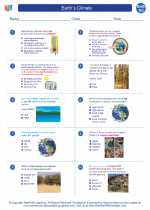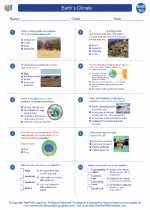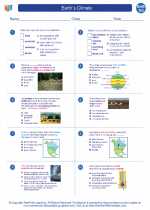Deserts
A desert is a barren area of land where little precipitation occurs and, consequently, living conditions are hostile for plant and animal life. The lack of vegetation exposes the unprotected surface of the ground to the processes of denudation. About one-third of the land surface of the world is arid or semi-arid. This includes much of the polar regions where little precipitation occurs and which are sometimes called "cold deserts".
Types of Deserts
There are four main types of deserts: hot and dry deserts, semi-arid deserts, coastal deserts, and cold deserts. Each type has its own unique characteristics and climate patterns that contribute to the lack of precipitation in these regions. Understanding these differences can help in understanding the various ecosystems and adaptations found in deserts.
Desert Ecosystems
Despite the harsh conditions, deserts are home to a variety of plant and animal life that have adapted to survive in these environments. Some common desert plants include cacti, succulents, and drought-resistant shrubs, while animal adaptations include nocturnal behavior, efficient water conservation, and heat tolerance. Understanding these adaptations is important in understanding the delicate balance of desert ecosystems.
Formation and Geology
Deserts are formed by a combination of factors including atmospheric circulation patterns, topography, and the presence of nearby mountain ranges. These factors contribute to the lack of precipitation and the arid conditions found in deserts. Understanding the geology and formation of deserts can provide insight into the unique landscapes and features found in these regions.
Human Impact
Human activities such as agriculture, urbanization, and resource extraction have had significant impacts on desert ecosystems. Understanding the effects of these activities on desert environments is crucial in developing sustainable practices and conservation efforts to preserve these delicate ecosystems.
Study Guide
- What are the four main types of deserts and their unique characteristics?
- Discuss the adaptations of plants and animals in desert ecosystems.
- Explain the factors contributing to the formation of deserts and their geology.
- How have human activities impacted desert environments, and what are the implications for conservation?
◂Earth Science Worksheets and Study Guides High School. Earth`s Climate

 Worksheet/Answer key
Worksheet/Answer key
 Worksheet/Answer key
Worksheet/Answer key
 Vocabulary/Answer key
Vocabulary/Answer key
 Vocabulary/Answer key
Vocabulary/Answer key
 Vocabulary/Answer key
Vocabulary/Answer key
